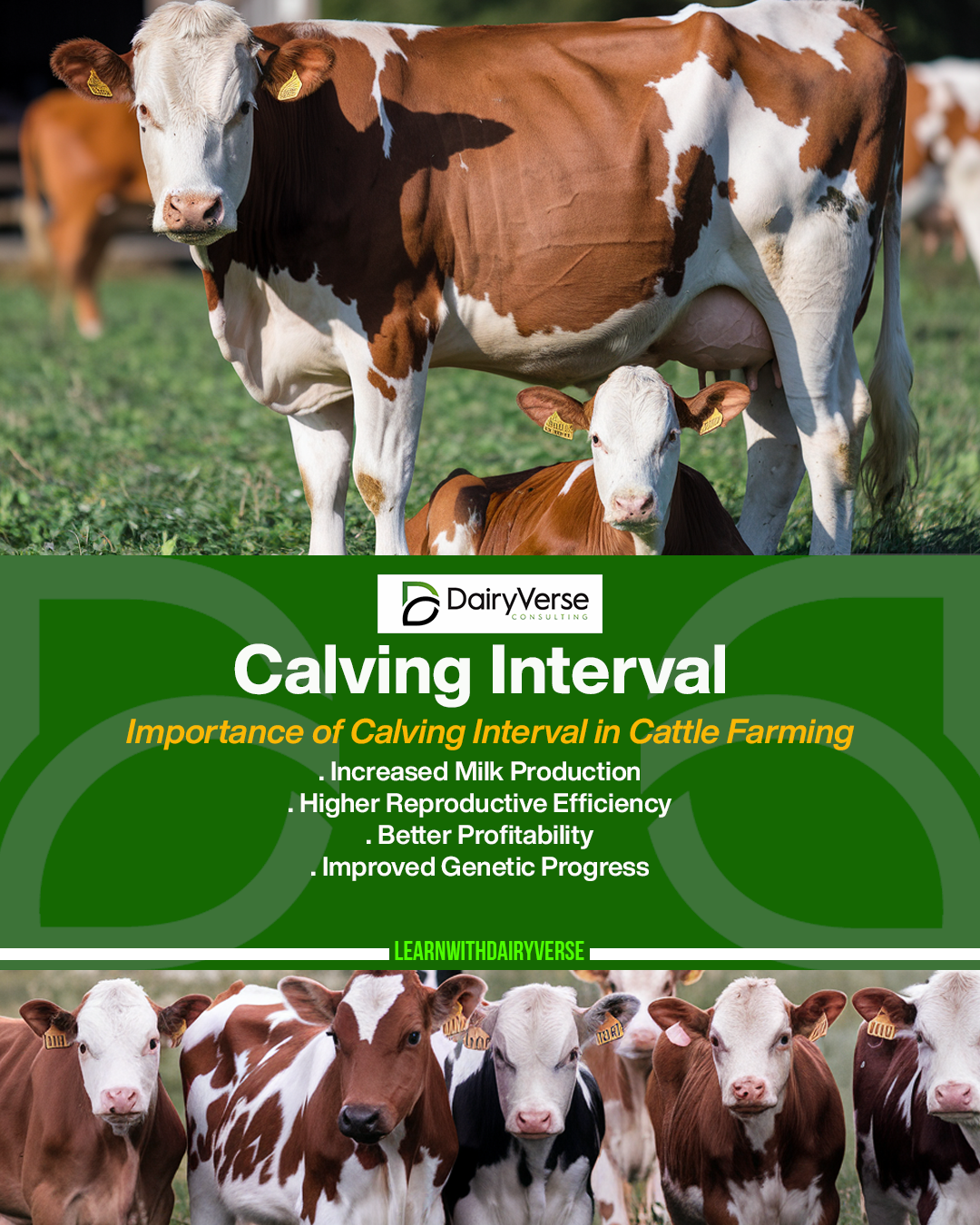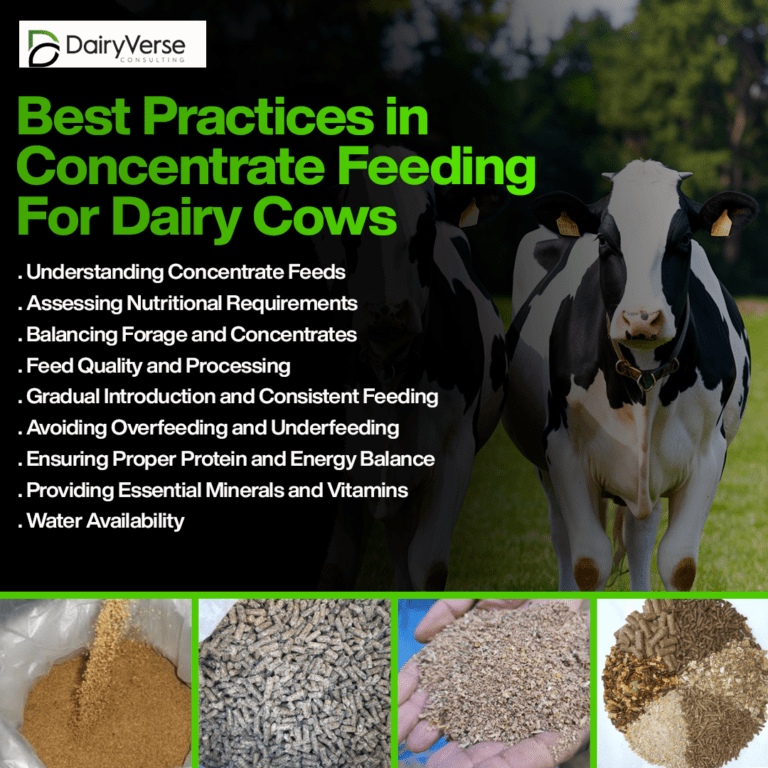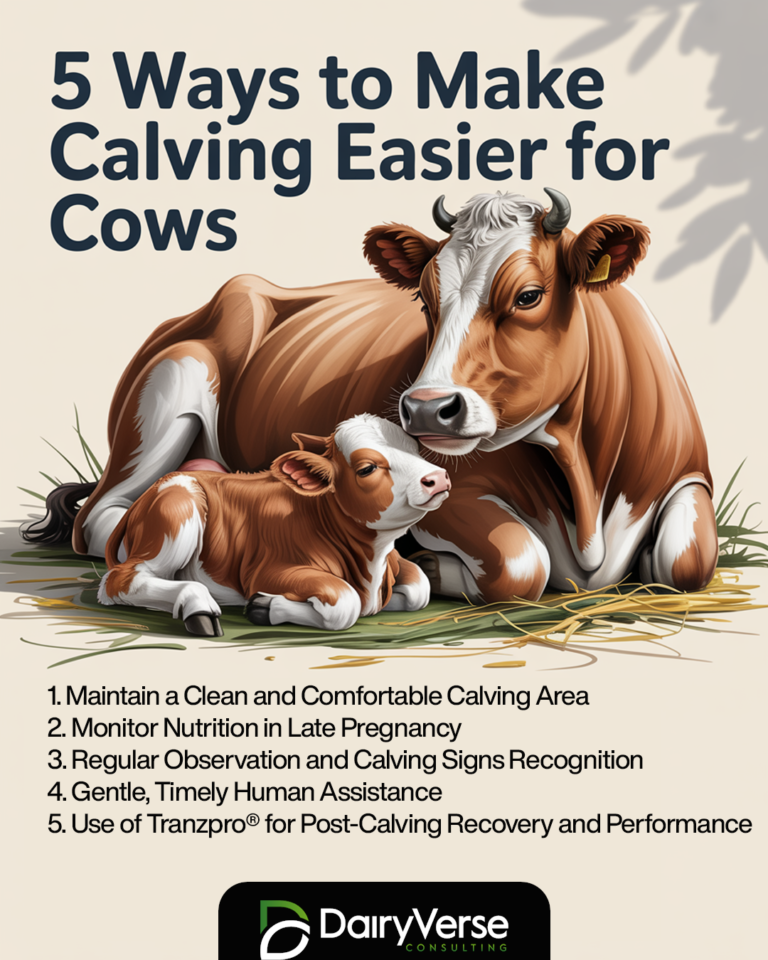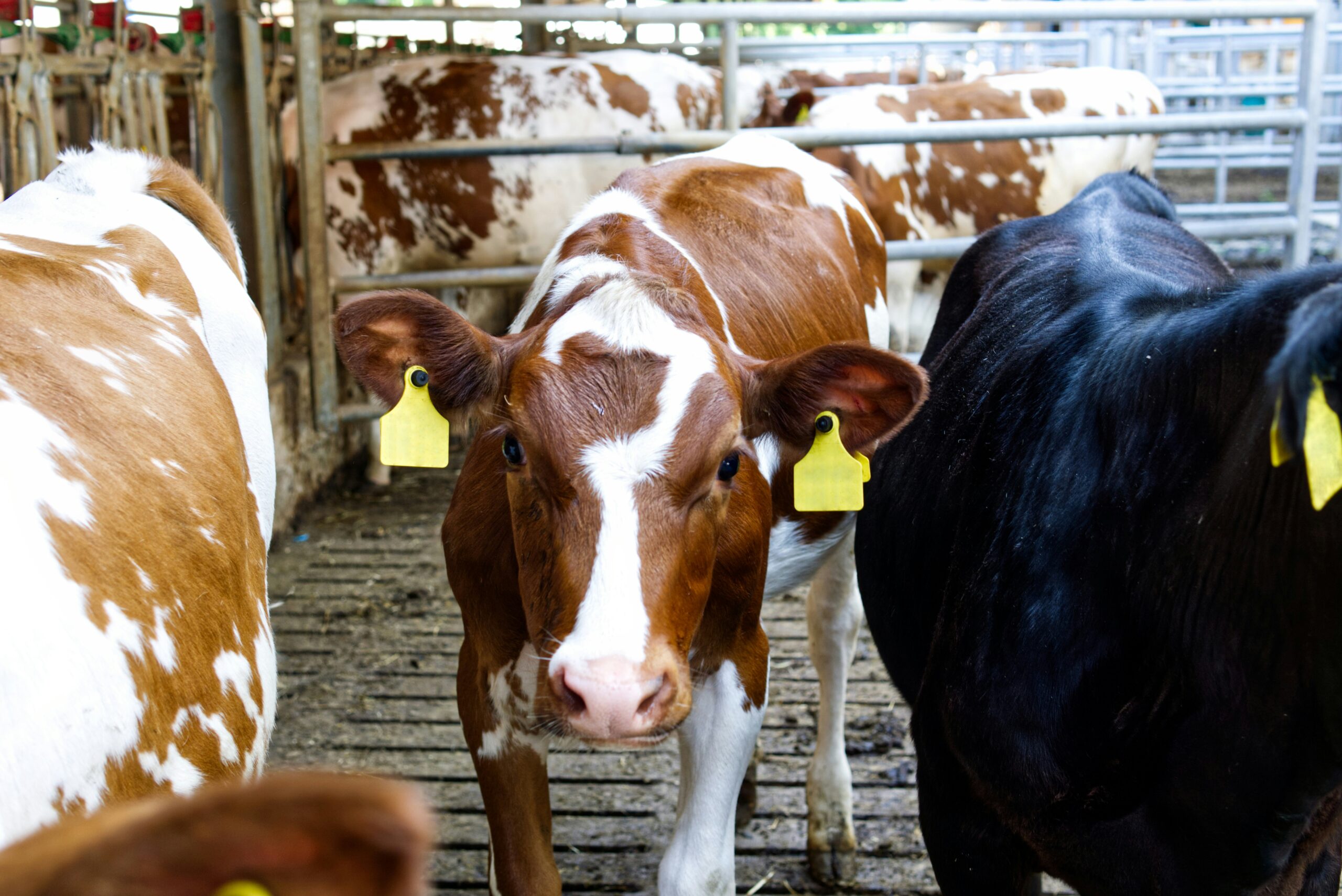Understanding Calving Interval in Dairy and Beef Cattle
The calving interval is a crucial factor in cattle farming, influencing both productivity and profitability. It refers to the period between the birth of one calf and the subsequent birth of the next calf from the same cow. For both dairy and beef cattle, the ideal calving interval is approximately one year (12 to 13 months). However, achieving this target requires proper management of nutrition, reproduction, and overall herd health.
1. Importance of Calving Interval in Cattle Farming
A well-managed calving interval is essential for maintaining a high level of efficiency in cattle farming. The key benefits include:
- Increased Milk Production (in dairy cattle): Shorter calving intervals ensure that cows spend less time in the dry period and more time in lactation, maximizing milk yield.
- Higher Reproductive Efficiency: A cow that calves regularly every year contributes more efficiently to herd growth and sustainability.
- Better Profitability: More calves mean more opportunities for farmers to sell or raise young stock for meat or replacement heifers.
- Improved Genetic Progress: Shorter calving intervals allow for quicker genetic improvement through selective breeding.
2. Factors Affecting the Calving Interval
Maintaining an optimal calving interval requires careful management of several key factors:
a) Nutrition and Body Condition
- Proper nutrition is crucial for reproductive success. A cow that is either underfed or overfed may struggle with fertility.
- Body Condition Score (BCS) plays a role in postpartum recovery and estrus cycles. The ideal BCS before calving should be around 3.0 to 3.5 on a scale of 1 to 5.
Using premium reproductive supplements like Fertility+® and Tranzpro® can significantly improve fertility, reproductive health, and overall productivity in dairy and beef cattle.
- Fertility+® is a specialized reproductive health supplement designed to enhance fertility in heifers. It helps address delayed and silent heat, dystocia (difficult labor), and retained afterbirth, improving conception rates. With a recommended daily dosage of 50 grams per heifer, Fertility+® ensures improved reproductive performance.
- Tranzpro®, on the other hand, supports udder health, appetite stimulation, and early lactation recovery, helping pregnant heifers transition smoothly into peak milk production. It also reduces the risk of retained afterbirth, which can extend calving intervals if left unaddressed.
b) Heat Detection and Breeding Management
- Effective heat detection ensures that cows are bred at the right time. Missed heat cycles extend the calving interval.
- Artificial Insemination (AI) should be done 12-18 hours after the cow shows signs of standing heat.
- Maintaining accurate records helps farmers track breeding dates and calving patterns.
c) Postpartum Recovery and Uterine Health
- After calving, cows require time for their reproductive system to recover. This period is called the voluntary waiting period (VWP), typically lasting 45-60 days.
- Retained placentas, metritis, or uterine infections can delay reproductive cycles and increase the calving interval. Tranzpro® helps prevent these conditions, ensuring smooth postpartum recovery and quicker return to estrus cycles.
3. Challenges in Achieving a One-Year Calving Interval
Many farms struggle to maintain an ideal calving interval due to several challenges, including:
- Poor Heat Detection: Many farmers miss estrus signs, delaying insemination.
- Low Conception Rates: Issues like silent heat, poor semen quality, and reproductive disorders reduce pregnancy rates.
- Calving Difficulties (Dystocia): Difficult births can cause injuries, delaying the next pregnancy. Fertility+® helps reduce dystocia and ensures smoother calving.
- Prolonged Postpartum Anestrus: Some cows take longer to return to estrus after calving, leading to extended intervals. A balanced diet supplemented with Fertility+® helps restore reproductive efficiency.
- Disease and Parasites: Health issues such as mastitis, metritis, and retained placentas negatively affect fertility. Tranzpro® reduces the risk of retained afterbirth, ensuring a faster recovery.
4. Strategies to Improve Calving Interval
Farmers can take several steps to ensure a consistent one-year calving interval:
a) Implement a Strict Breeding Calendar
- Set up a breeding season to ensure cows conceive within a fixed time frame.
- Use estrus synchronization programs to improve breeding efficiency.
b) Optimize Nutrition
- Provide high-energy and protein-rich diets to support reproductive performance.
- Supplement with Fertility+® to improve conception rates and reproductive health.
c) Enhance Heat Detection and AI Timing
- Use heat detection aids like tail paint, activity monitors, or teaser bulls.
- Train farmworkers to recognize heat signs accurately.
d) Manage Postpartum Health
- Ensure proper calving assistance to reduce injuries.
- Use Tranzpro® to prevent retained afterbirth and support postpartum recovery.
e) Improve Genetic Selection
- Choose bulls and cows with high fertility traits.
- Select for easier calving (low birth weight) to minimize dystocia.
Conclusion
A well-maintained calving interval is the backbone of successful cattle farming, impacting milk production, reproductive efficiency, and farm profitability. By focusing on nutrition, heat detection, postpartum care, and breeding management, farmers can achieve the optimal one-year calving interval, leading to a more productive and sustainable herd.
Using Fertility+® and Tranzpro® as part of a reproductive management plan can further enhance fertility, reduce postpartum complications, and improve overall herd health—helping farmers maintain profitable and efficient dairy and beef operations.







